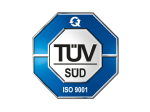What is Milling Machine? Purpose & Uses
A milling machine is one of the most versatile tools in modern manufacturing. By using rotating cutters to precisely remove material from a workpiece, it produces complex shapes, smooth finishes, and tight tolerances that other processes can’t easily achieve.
Today’s milling machines especially advanced CNC milling machines play a key role in metal fabrication, prototyping, tool and die making, and high-precision component production for industries like aerospace, automotive, electronics, and medical devices.
What Is a Milling Machine?
A milling machine is a subtractive manufacturing tool that uses a rotating cutter to remove material from a stationary workpiece, producing shapes, surfaces, slots, pockets, or holes with high precision. Modern milling machines are often CNC-controlled, meaning they follow computer numerical control instructions derived from CAM/CAD software. Milling machines are crucial in metal fabrication, prototyping, tool & die work, and many industrial sectors.
While milling machines shape parts by cutting and contouring, a drilling machine is specialized for creating holes with precision
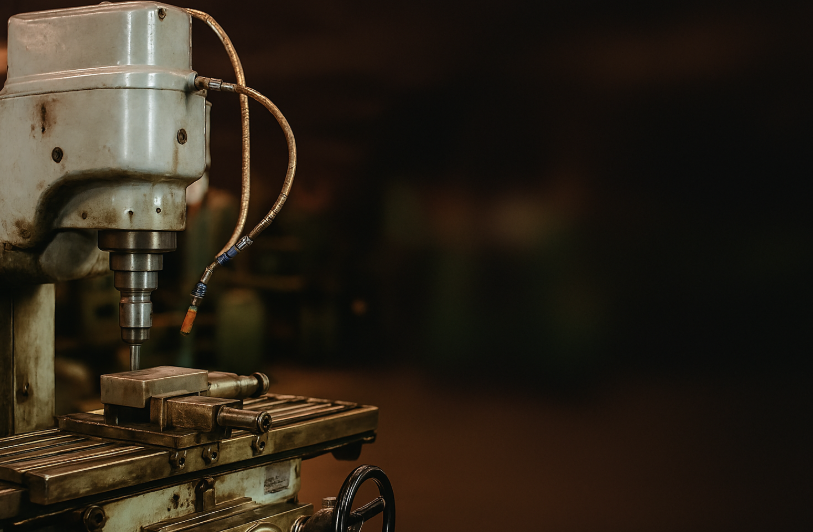
How Does a Milling Machine Work?
A milling machine works by using a rotating cutting tool to remove material from a fixed or moving workpiece. Guided either manually or by computer numerical control (CNC), it moves along multiple axes (X, Y, and Z) to create precise shapes, slots, holes, and contours.
By adjusting spindle speed, feed rate, and depth of cut, operators or automated programs achieve accurate dimensions, high surface quality, and repeatable results across metals, plastics, and composites.
- Design & Programming: The process usually starts with a CAD drawing, which is converted to CAM, then translated into G-code (and sometimes M-code) that the machine interprets.
- Machine Components: Key parts include the spindle (holds and rotates the cutting tool), machine bed/table (holds the workpiece), feed mechanisms (for movement in X, Y, Z axes), control systems, coolant/lubrication, and tooling magazine/tool changer.
- Operation Modes: In CNC milling, the cutter and/or workpiece move in multiple axes. For example: 3-axis milling moves in X, Y, Z. 4-/5-axis milling adds rotation of tool or table for more complex geometries.
- Cutting Mechanics: Parameters like spindle speed (RPM), feed rate (mm/min or in/min), depth of cut and type of cutter all affect accuracy, finish, tool wear, and cost. Proper setup is essential.
Purpose of a Milling Machine
A milling machine’s purpose is to remove material with precision to create accurate shapes, holes, and surface finishes on metals, plastics, and composites. It supports prototyping, production, and tooling by cutting, drilling, slotting, and contouring parts to tight tolerances.
They are used in industries like aerospace, automotive, electronics, tooling, construction, medical devices, and more.
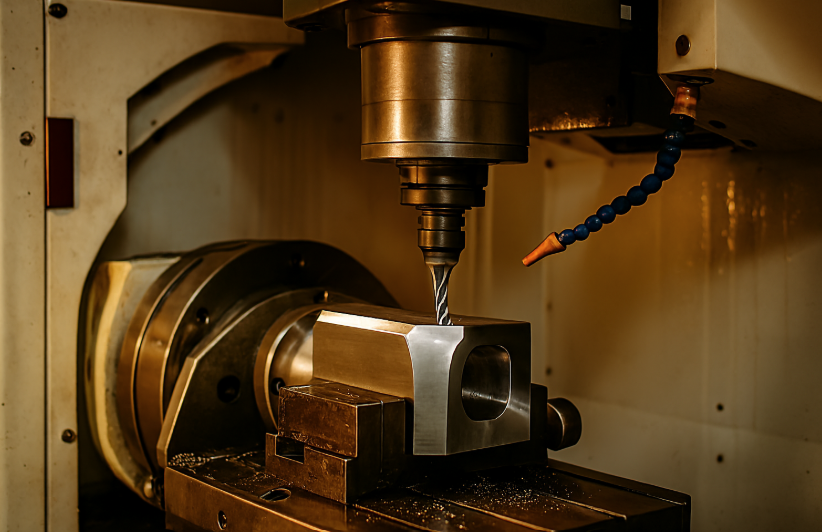
Different Types of Milling Machines
Milling machines come in several types, each designed to handle different materials, part sizes, and levels of complexity. The type of milling machine you choose affects cutting speed, accuracy, setup flexibility, and cost. From simple vertical and horizontal mills to advanced multi-axis CNC machines, each configuration offers unique advantages for shaping metals, plastics, and composites.
Understanding the main types will help you select the right machine for your project or manufacturing needs.
| Type | Axis / Spindle Orientation / Control | Best Suited For / Key Strengths |
|---|---|---|
| Vertical Milling Machine | Spindle is vertical; 3-axis common | Simple profiling, plunging, slotting, general milling tasks. |
| Horizontal Milling Machine | Spindle horizontal; often heavier and more rigid | Heavy cutting, large workpieces, slotting, roughing. |
| Universal Milling Machine | Can tilt spindle or table for angled milling | Versatility, less setup for angular work. |
| Turret, Bed, Column Mills (Manual vs CNC) | Varying structure; turret/bed/column define rigidity, workpiece size, accessibility | Manual for small shops; CNC for automation, higher precision. |
| 3-axis, 4-axis, 5-axis, Multi-axis Milling Machines | More axes = more geometric complexity | Complex surfaces, fewer setups, sculpted or contoured parts. |
| Gantry / Bridge Mills | Large tables, bridge structure, good for large format work | Large sheet metal, aerospace components, molds. |
| High Speed / High Feed Milling | Designed for rapid removal of material / fine finish | Thin materials, light finishing, plastics, composites. |
What Materials Can a Milling Machine Cut?
Modern milling machines can handle a broad range of materials. Key considerations are hardness, machinability, thermal properties, and compatibility with tooling. Common materials include:
- Metals:
- Aluminium (6061, 7075, etc.) easy to machine, good for prototypes.
- Steel & Stainless Steel more difficult, higher tool wear, need coolant.
- Copper, Brass, Bronze good for conductivity and finish but need careful chip removal.
- Specialty alloys (Titanium, Inconel) require correct tooling, slower speeds.
- Plastics & Polymers: ABS, Nylon, Polycarbonate, PEEK, Delrin, lower heat capacity, need proper cooling and chip control.
- Composites: Carbon fibre, glass fibre composites require specialized cutters, dust control.
- Other: Wood, foams, waxes (for prototyping / molds), depending on application.
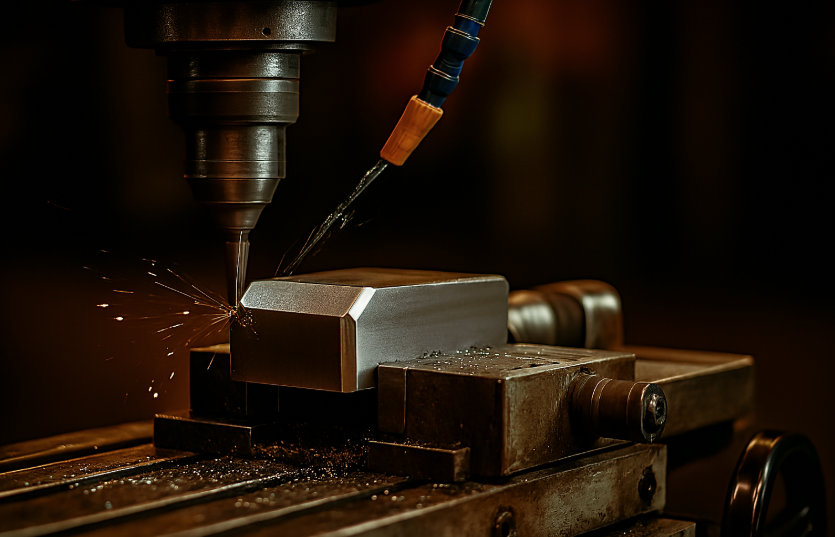
Different Cutting Tools and Milling Operations
Cutting tools and operations define what tasks the milling machine can perform. Semantic keywords: cutters, toolpaths, operations, feed, speed.
Common cutting tools:
- End mills (square, ball nose, corner radius) – for general cutting, profiling.
- Face mills – for surfacing large flat areas.
- Slot drills / Slitting saws – for grooves or slots.
- Thread mills – for internal or external threading.
- Burr cutters, drill bits, reamers – for finishing or hole making.
- Inserts & indexable tools – for heavy roughing, multiple materials.
Core milling operations:
- Face milling
- Slot milling
- Peripheral milling / side milling
- Profile milling
- Plunge milling
- Thread milling
- Chamfering, drilling, tapping
In addition to standard milling tasks, CNC machines can also create chamfers and fillets, rounded or beveled edges that improve part fit, safety, and aesthetics.
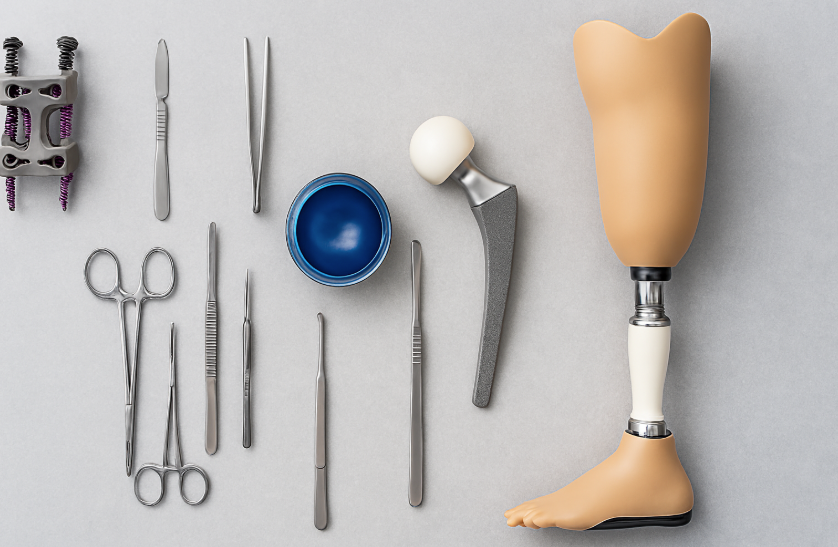
Milling Machine Applications
A milling machine is used to produce precise parts, surfaces, and features for a wide range of industries. By shaping metals, plastics, and composites, milling supports prototyping, production, and tooling where accuracy and repeatability are essential.
- Aerospace components such as brackets, turbine parts, and housings
- Automotive parts including engine blocks, gear housings, and shafts
- Medical devices like implants, surgical instruments, and prosthetics
- Electronic enclosures, heat sinks, and connectors
- Tooling and fixtures for manufacturing and assembly lines
- Custom jigs, molds, and dies for plastic injection molding and sheet metal work
- Rapid prototyping and low-volume production combined with 3D printing
Advantages and Limitations of Milling Machines
Advantages:
- Very high precision and repeatability when well-configured and maintained.
- Flexibility: wide range of parts from simple to complex geometry.
- Material variety: metals, plastics, composites.
- Good surface finish possible.
- Automation via CNC reduces labour, human error.
Limitations:
- High initial investment for CNC mills, especially multi-axis, gantry, with advanced control.
- Tooling cost can be substantial, especially for hard materials or high speed.
- Some materials cause rapid tool wear, require cooling, specialized tooling.
- Complexity in setup: fixturing, workholding, CAM programming, requires skilled operators.
- Size constraints: very large parts need specialized machines; transport, space, foundation, power all matter.
Cost Considerations
The Singapore and Malaysia CNC machine market is growing. It was ~US$219.9 million in 2022 and projected to reach ~US$357.68 million by 2030, with a CAGR of ~6.27%.
The price of industrial CNC milling machines can range from below USD 50,000 for simpler units up to several hundreds of thousands or more for fully featured, high-axis, high speed, high rigidity machines.
Typical cost ranges:
- Entry-level or prototype parts (small size, simple geometry, aluminium or plastics): relatively affordable. In Singapore, such jobs might cost a few hundred to a few thousand SGD depending on complexity and quantity.
- Mid-range CNC mills (3-axis, steel work, moderate tolerances): higher cost per hour, tool wear is higher.
- High-end machines (5-axis, large work envelope, high hardness materials): capital cost often tens to hundreds of thousands of SGD; part cost per unit rises accordingly.
Conclusion
Milling machines play a fundamental role in modern manufacturing, allowing engineers and fabricators to shape, drill, and finish materials with exceptional accuracy. Their ability to work with metals, plastics, and composites makes them indispensable for applications ranging from prototyping to full-scale production.
At The Monster Builder, milling is simply one part of a broader manufacturing capability that also includes CNC machining, sheet metal work, 3D printing, and plastic injection molding. By integrating these processes, we’re able to support diverse projects and maintain high standards of precision and consistency.
This balanced approach ensures that whether a component is machined, printed, or fabricated, it meets the stringent requirements of today’s engineering and manufacturing environments.


